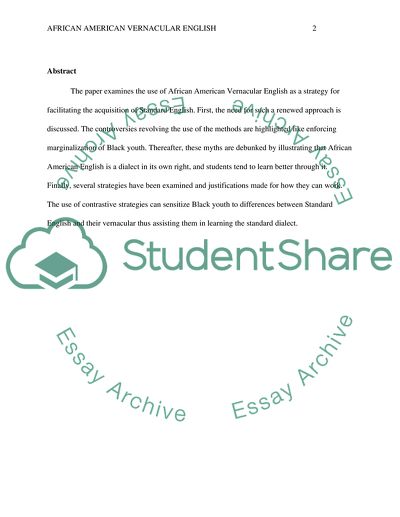Cite this document
(“How Linguistic Features of African American Vernacular English (also Research Paper”, n.d.)
Retrieved de https://studentshare.org/humanitarian/1646041-how-linguistic-features-of-african-american-vernacular-english-also-known-as-african-american-english-have-been-used-to-teach-standard-american-english
Retrieved de https://studentshare.org/humanitarian/1646041-how-linguistic-features-of-african-american-vernacular-english-also-known-as-african-american-english-have-been-used-to-teach-standard-american-english
(How Linguistic Features of African American Vernacular English (also Research Paper)
https://studentshare.org/humanitarian/1646041-how-linguistic-features-of-african-american-vernacular-english-also-known-as-african-american-english-have-been-used-to-teach-standard-american-english.
https://studentshare.org/humanitarian/1646041-how-linguistic-features-of-african-american-vernacular-english-also-known-as-african-american-english-have-been-used-to-teach-standard-american-english.
“How Linguistic Features of African American Vernacular English (also Research Paper”, n.d. https://studentshare.org/humanitarian/1646041-how-linguistic-features-of-african-american-vernacular-english-also-known-as-african-american-english-have-been-used-to-teach-standard-american-english.


